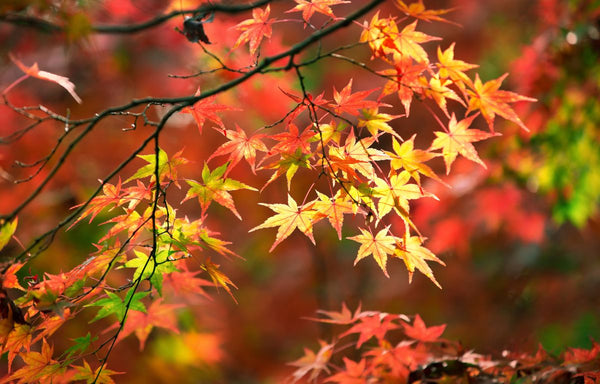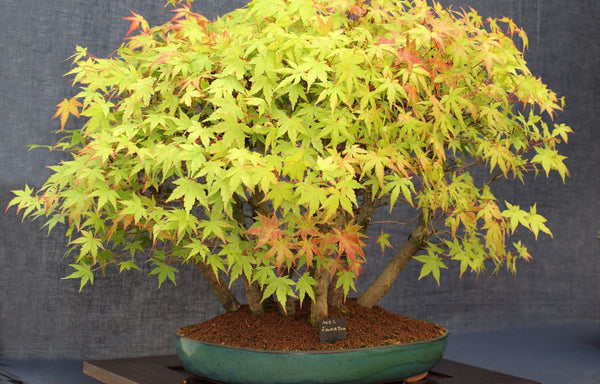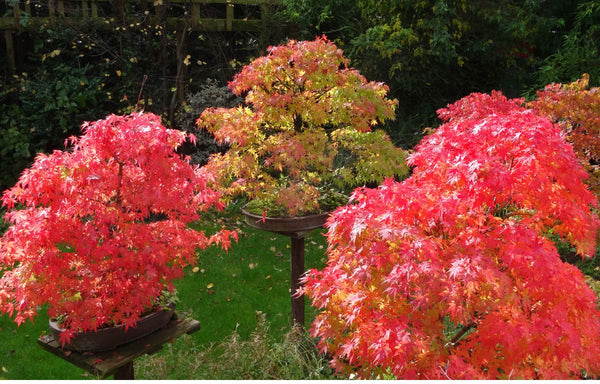
The Elegance of Japanese Maples
Japanese Maples, also known as Acer palmatum, have been cultivated for centuries in Japan, where their autumn leaf color change—known as "Momiji"—is celebrated. Thanks to their unique, finger-shaped leaves and striking beauty, Japanese Maples have become cherished ornamental trees worldwide, bringing grace and elegance to both public and private gardens.

The Introduction of Japanese Maples to the U.S.
Japanese Maples made their way to the United States through international plant trade in the 19th and 20th centuries. While they do require care, these trees are relatively low-maintenance compared to other ornamental species. With the proper attention, Japanese Maples can thrive for decades, offering beauty and shade in a variety of climates across the U.S.
Growing Japanese Maples in Pots
Despite being full-sized trees, Japanese Maples grow slowly, which makes them ideal for growing in pots or even cultivating as bonsai trees. Their slow growth rate and hardy nature make them popular for ornamental container gardening.
When potting a Japanese Maple, it's important to choose a wider pot over a deeper one, as these trees have shallow root systems. A pot that is around 24 inches in diameter or with a container volume of 13-20 gallons is ideal. Ensure the pot has good drainage, as Japanese Maples prefer moist but not waterlogged soil.
If you're planting a young tree, opt for a pot that is just slightly larger than its root ball. Too much space around the roots can cause stress and shock, leading to poor growth.

Care Tips for Potted Japanese Maples
- Sunlight and Placement: Japanese Maples thrive in partial shade or dappled sunlight, especially in areas with hot summers. Place your potted tree where it will be shielded from harsh afternoon sun and strong winds, which can dry out its leaves and damage branches.
- Temperature: These trees do best in cool to temperate climates, with an ideal range of 55°F to 75°F. While they can tolerate both heat and cold, be sure to provide extra hydration during hot spells and protection from frost in colder regions.
- Soil: Japanese Maples prefer well-draining soil that is slightly acidic to neutral. A loose, well-aerated soil mix will encourage healthy root growth. Adding mulch around the base of the tree helps to regulate soil moisture and temperature.
- Watering: Keep the soil consistently moist but not waterlogged. Check the top 2-3 inches of soil and water when it feels dry. During hot weather, soil in wide, shallow pots tends to dry out faster, so be sure to monitor the moisture level frequently.
- Fertilization: The best time to fertilize is in early spring, just as the tree begins its growing season. Choose a slow-release fertilizer that is low in nitrogen to avoid rapid growth, which can weaken the tree.
- Pruning: Regular pruning helps maintain the shape and health of your tree. Remove dead or damaged branches and thin out crowded areas to allow sunlight to reach the inner parts of the tree.
- Repotting: As your Japanese Maple grows, it will need repotting every 2-3 years. The best time to repot is during its dormant period in late fall or winter, which minimizes stress on the tree. If you want to keep it in the same pot, root pruning is essential to prevent it from becoming root-bound.

Common Problems and Solutions for Potted Japanese Maples
- Drying Out: Potted Japanese Maples can dry out quickly, especially in warm climates or when exposed to wind. Consider using a slow-drip irrigation system or a self-watering pot to help maintain moisture.
- Root-Bound: Over time, your tree’s roots may outgrow the pot, causing it to become root-bound. Signs include stunted growth, wilting, and reduced leaf production. To prevent this, repot your tree or trim the roots when necessary.
- Pests and Disease: Japanese Maples are relatively pest-resistant but can occasionally suffer from aphids or powdery mildew. Regular inspection and treatment with insecticidal soap or neem oil can help manage these issues.
- Fertilization Issues: Avoid fertilizers that are high in nitrogen, as they encourage fast, weak growth. Stick to low-nitrogen fertilizers and avoid fertilizing too late in the season to prevent new growth that could be damaged by frost.
- Wind Damage: The expansive canopies of Japanese Maples make them vulnerable to wind damage, especially when grown in pots. Ensure the pot is wide and stable to prevent tipping in strong winds.
Japanese Maples offer a stunning way to add beauty and elegance to any garden. Whether grown in the ground or in a pot, their vibrant colors and graceful shape make them a timeless addition to landscapes across the U.S.




